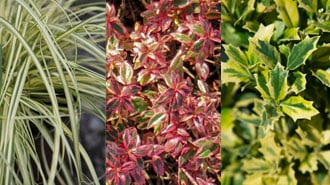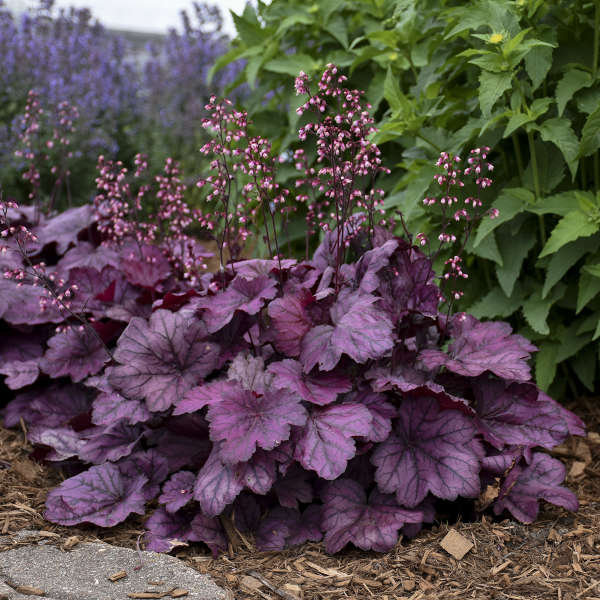Evergreen Companion Plants That Will Make Your Garden Pop
Evergreen Companion Plants That Will Make Your Garden Pop
Evergreen plants are a great way to add year-round interest to your garden. They come in a wide variety of shapes, sizes, and colors, so you can find the perfect ones to complement your existing landscape. And when you pair evergreens with other plants, you can create stunning combinations that will wow your guests all year long.
In this blog post, we'll discuss some of the best evergreen companion plants. We'll also provide tips on how to choose the right plants for your garden and how to care for them.
Why Use Evergreen Companion Plants?
There are many reasons to use evergreen companion plants in your garden. Here are a few of the most important:
- Year-round interest: Evergreen plants provide color and interest in your garden all year long. This is especially important in winter, when many other plants are dormant.
- Texture and contrast: Evergreen plants can add texture and contrast to your garden. For example, you could pair a spiky yucca with a soft, feathery fern.
- Attract wildlife: Many evergreen plants attract wildlife, such as birds, butterflies, and bees. This is a great way to help support the local ecosystem.
- Drought tolerance: Many evergreen plants are drought tolerant, which means they can withstand periods of dry weather. This is a great option if you live in a dry climate.
How to Choose Evergreen Companion Plants
When choosing evergreen companion plants, there are a few things to keep in mind:
- Sun exposure: Evergreen plants have different sun requirements. Some need full sun, while others prefer partial shade. Make sure to choose plants that will thrive in the same amount of sunlight as your existing plants.
- Soil type: Evergreen plants also have different soil requirements. Some need well-drained soil, while others prefer moist soil. Again, make sure to choose plants that will be happy in the same type of soil as your existing plants.
- Height and spread: Evergreen plants come in a wide variety of sizes. It's important to choose plants that will complement each other in terms of height and spread. For example, you wouldn't want to plant a tall yucca next to a low-growing fern.
- Color: Evergreen plants come in a wide variety of colors, from green to blue to gold. Choose plants that will complement the colors of your existing plants.
Tips for Caring for Evergreen Companion Plants
Once you've chosen your evergreen companion plants, it's important to care for them properly. Here are a few tips:
- Water regularly: Evergreen plants need regular watering, especially during hot, dry weather.
- Fertilize annually: Evergreen plants benefit from annual fertilization. Use a fertilizer specifically formulated for evergreens.
- Prune as needed: Evergreen plants may need to be pruned occasionally to maintain their shape.
With a little planning, you can create a stunning evergreen garden that will provide year-round interest. By following the tips above, you can choose the right plants for your garden and care for them properly.
Evergreens are a great way to add year-round interest to your landscape, but they can also look a bit bare if they're not planted with the right companion plants. The right companions can help to fill in the empty spaces, add color and texture, and attract pollinators and other wildlife.
If you're looking for some inspiration for companion plants for evergreens, I recommend visiting Gardenia Inspiration. This website has a comprehensive list of companion plants for evergreens, along with photos and descriptions. You can also find planting tips and advice on how to create a beautiful and balanced landscape.
I hope this helps!
FAQ of companion plants for evergreens
Q: What are the best companion plants for evergreens?
A: There are many different companion plants that can be paired with evergreens, but some of the most popular include:
- Other evergreen trees and shrubs, such as spruce, pine, yew, fir, and juniper. These plants share similar growing conditions and can provide year-round interest in the garden.
- Perennials that bloom in the spring or fall, such as azalea, rhododendron, and hellebore. These plants add color and interest to the garden when the evergreens are not in bloom.
- Annuals that can be used to fill in empty spaces or provide seasonal color, such as pansies, petunias, and marigolds.
- Herbs, such as rosemary, thyme, and mint. These plants can be used for cooking, as well as for attracting pollinators.
Q: What are the benefits of companion planting with evergreens?
A: There are many benefits to companion planting with evergreens, including:
- Improved pollination: Some companion plants, such as bee balm and lavender, attract pollinators, which can help to improve the pollination of your evergreens.
- Reduced pest and disease problems: Some companion plants, such as marigolds and nasturtiums, can help to repel pests and diseases, which can help to keep your evergreens healthy.
- Increased diversity: Companion planting can help to increase the diversity of your garden, which can make it more interesting and attractive.
- Enhanced beauty: Companion planting can be used to create stunning combinations of plants that complement each other's colors, textures, and shapes.
Q: What are some things to consider when choosing companion plants for evergreens?
A: When choosing companion plants for evergreens, there are a few things to keep in mind, including:
- The size and growth habit of the plants: Make sure that the companion plants you choose will not outgrow the evergreens or crowd them out.
- The sun and shade requirements of the plants: Make sure that the companion plants you choose have the same sun and shade requirements as the evergreens.
- The soil conditions of the area: Make sure that the companion plants you choose will thrive in the same soil conditions as the evergreens.
- The aesthetic appeal of the plants: Choose companion plants that you find visually appealing and that will complement the evergreens in your garden.
Q: What are some common mistakes to avoid when companion planting with evergreens?
A: A few common mistakes to avoid when companion planting with evergreens include:
- Planting too many companion plants: It is important to not overdo it when companion planting, as too many plants can crowd out the evergreens.
- Planting incompatible plants: Make sure to do your research and choose companion plants that have compatible growth habits, sun and shade requirements, and soil conditions.
- Not considering the aesthetic appeal of the plants: It is important to choose companion plants that you find visually appealing and that will complement the evergreens in your garden.
Image of companion plants for evergreens
- Coreopsis is a low-maintenance perennial that blooms from early summer to fall. It attracts butterflies and other pollinators, and it's a good choice for sunny areas.
- Azaleas are beautiful flowering shrubs that come in a variety of colors. They prefer acidic soil and partial shade, and they make good companions for evergreens like pines and spruces.

- Hostas are shade-loving perennials that come in a variety of leaf shapes and colors. They're deer-resistant and easy to care for, and they make good companions for evergreens like yews and hemlocks.

- Heucheras are colorful perennials that bloom in the spring. They prefer partial shade and well-drained soil, and they make good companions for evergreens like junipers and arborvitaes.

- Sedge is a low-maintenance groundcover that comes in a variety of textures and colors. It's drought-tolerant and deer-resistant, and it makes a good choice for sunny or shady areas.
Post a Comment for " Evergreen Companion Plants That Will Make Your Garden Pop"